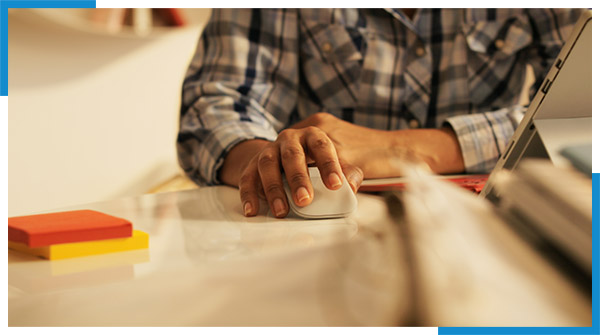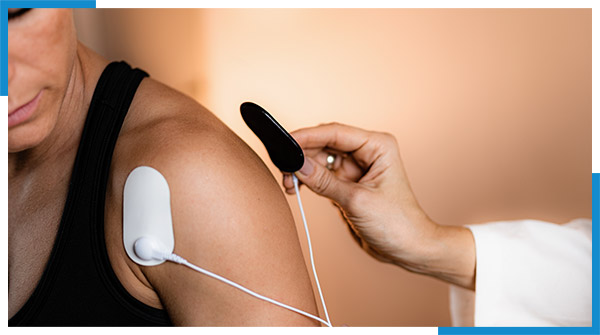Get Better Faster
We believe what really sets us apart from other clinics is our dedication for restoring normal function and movement patterns, thereby preventing future recurrences and generally helping you inhabit your body more comfortably.
We use evidence based approach comprising of manual therapy and rehabilitation programmes, which may include soft tissue massage, mobilisation or manipulation of joints, Dry Needling , taping and electrotherapy.

Acute Lower Back Pain
Your lumbar spine is made up of 5 strong vertebrae, separated with soft discs that sit between each space and several layers of muscle and soft tissue. All of these structures work together and give your back strength and flexibility, allowing your back to be the strongest part of your body.
Acute lower back pain is usually caused by excess stresses and strains being placed upon these tissues. As your lower back is essential to all movements in your body, pain in this area can often feel more severe than elsewhere.

Self Management Strategies
- Resting in bed for long periods is generally discouraged.
- Staying active, and using heat and simple medications (eg, ibuprofen such as Nurofen or a diclofenac such as Voltaren) for pain relief can be helpful.
- Simple stretches for back can be beneficial. (Your physio will be able to show you correct stretches)
How Enrich Physio’s Physiotherapist can help
- We can do number of treatment options. Including Hands on treatment like Mobilisations, Manipulations and soft tissue massage
- Develop a home based education, stretching and strengthening program
- Use real time Ultrasound once initial pain has settled for training core activation
- Dry Needling for pain release and muscle relaxation
Carpal Tunnel Syndrome
Carpal tunnel is a narrow passage in the wrist which is surrounded by bones and ligaments of the wrist. Median nerve passes through the tunnel. Any changes in the muscles, tendons, joints around the region which irritates/compresses the Median nerve can cause CTS.
Symptoms of CTS
Numbness, Pins and needles, Pain, particularly at night, Weakness in the hand (grip strength).

Causes of CTS
- Overuse – An inflammation in the tendons due to overuse, repetitive use, awkward postures of the hands can cause compression of the Median nerve in the carpal tunnel.
- Pregnancy – Pregnancy is associated with fluid retention in the bod, leading to increased joint capsule pressures, thereby, compressing the tunnel.
Self management of CTS
- Frequent breaks at work. An ice pack is a good way to provide pain relief
- Anti-inflammatories or pain medicines OTC help in symptom alleviation on a temporary basis.
- A wrist brace is of advantage as it can help in preventing bending of wrists at night in sleep and keep symptoms at bay (Your Physio can help you with the right brace for you depending on your symptoms).
How can Enrich Physio help
- Your physiotherapist can help with ergonomic advice about the wrist position at workplace and home to improve the symptoms and not affect work.
- Graded joint and nerve mobilisations to help with settling of inflammation/stiffness due to injury or arthritis in the wrist joint.
- Dry needling technique is effective in releasing the tension in the forearm and hand muscles, thereby ensuring the well being of the musculature in the region.
- Strapping techniques to offload the tunnel for symptomatic relief
Cervicogenic Headache
Self Treatment Options
- Avoid slouched postures while sitting
- Simple neck movements and stretches while at work (Your physio can show you the exercises)
- Heat pack to relive tightness in the neck muscles

How Physio can help
- Develop exercise and stretching program for you
- Use Acupuncture/Dry Needling to release tension in the neck muscles.
Use manual therapy techniques such as passive stretching, soft tissue release and joint mobilization - Provide advice of appropriate posture
Plantar Fasciitis
The plantar fascia is the thickened tissue on the sole of your foot. It pads the foot as well as having elastic properties to help transmit the forces of the calf muscle, allowing you to spring. It provides shape to your foot arch, providing shock absorption and an even distribution of your weight as you put weight through your leg.

Self Treatment Options
- Address Your footwear, avoid flat , loose and unsupportive shoes.
- Try arch support insoles (Your Physio can help you source correct ones)
- Stretching – Stretch calf muscles, plantar fascia (Your physio can show you correct stretches)
- Roll an ice bottle under your foot. This not only acts to reduce inflammation, but also helps to gently stretch the tissues.
How Physio can help
- Develop exercise and stretching program for you
- Use Shockwave therapy – Shock wave therapy is thought to work by inducing micro trauma to the tissue that is affected by these problems
- Use Acupuncture / Dry Needling to release tension in fascia
- Provide appropriate shoe and insole advice
- Uses Manual therapy techniques such as passive stretching, soft tissue manipulations and mobilisation of joints.
- Use Strapping – Uses either rigid sports tap or Kinesio tape t reduce load on tendon and fascia.
Rotator Cuff Tendinopathy

Self Treatment Options
- Postural correction
- Ice therapy
- Activity modification, avoid aggravating activities where possible
- Self stretching and strengthening exercises (Your Physio can show you appropriate exercises).
How Physio can help
- Develop exercise and stretching program for you
- Use Shockwave therapy – Shock wave therapy is thought to work by inducing micro trauma to the tissue that is affected by these problems
- Use Acupuncture / Dry Needling to release tension in the shoulder muscles
- Uses Manual therapy techniques such as shoulder mobilization, soft tissue release for the shoulder muscles and passive stretches
- Taping techniques – Uses either rigid sports tape or Kinesio tape to offload the tendons, facilitate/inhibit muscles or help in alignment of the shoulder.
Tennis Elbow
One of the most common diagnoses for tennis elbow is tendinopathy of the common extensor tendons of the wrist, which is typically an overuse injury. The muscles that bend the wrist backwards connect via a tendon that attaches just above the elbow, at the bone on the outside of the elbow. This tendon can become painful after activities such as gripping, pruning and tennis.

Self-Management Strategies
- Ice therapy
- You can try a tennis elbow brace, self massaging and activity modification
- Self stretching and strengthening exercises
How Physio can help
- Develop exercise and stretching program for you
- Use Shockwave therapy – Shock wave therapy is thought to work by inducing micro trauma to the tissue that is affected by these problems
- Use Acupuncture / Dry Needling to release tension and fascia
- Uses Manual therapy techniques such as passive stretching, soft tissue manipulations and mobilisation of joints.
- Use Strapping- Uses either rigid sports tap or Kinesio tape t reduce load on tendon and muscle. Advice on Tennis elbow brace.
